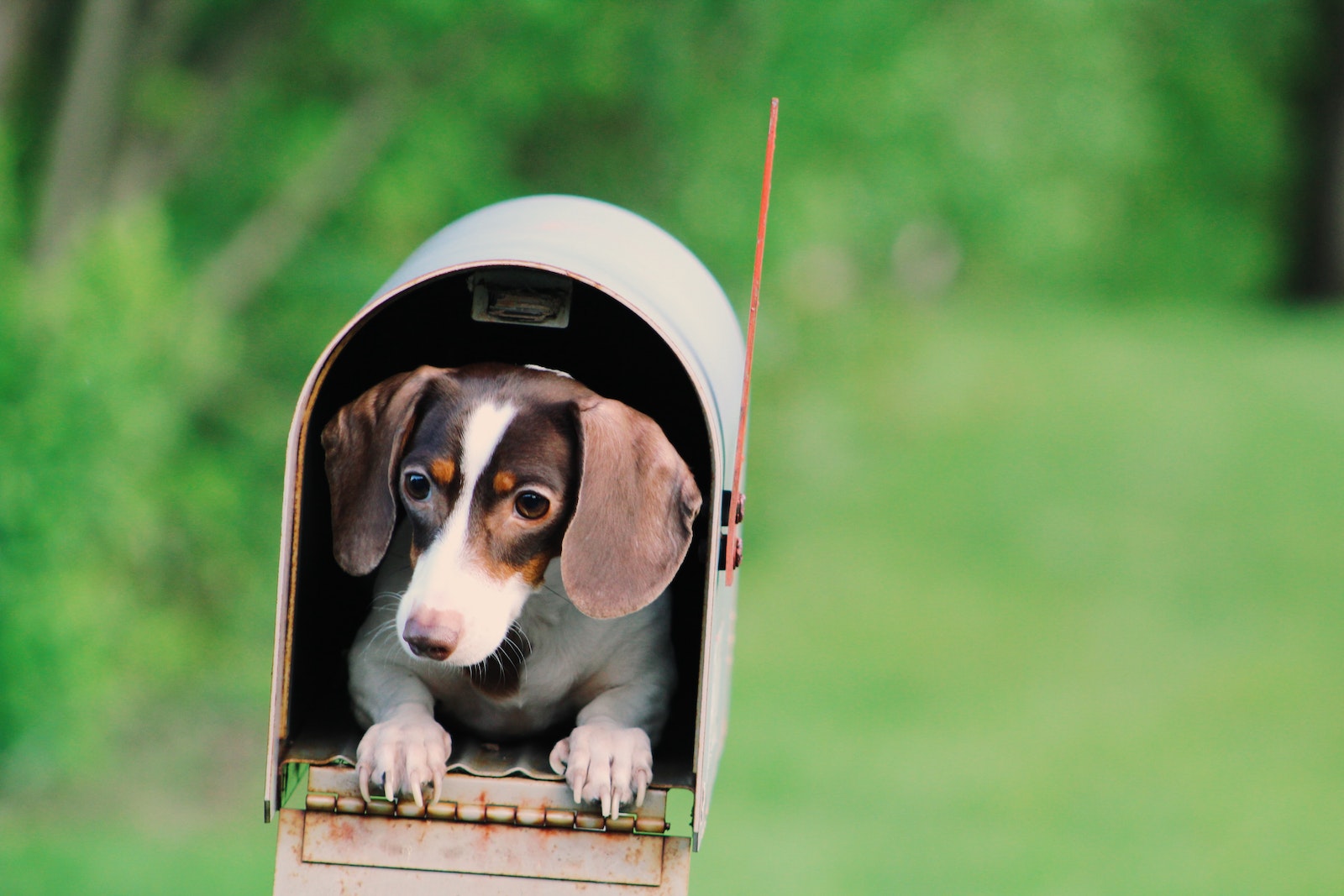Origin and History of the Dachshund Breed The Dachshund breed has a fascinating origin and...

How Can I Make My Own Dog Food: A Comprehensive Guide for Pet Owners
Introduction
If you’re a pet owner who wants the best for your furry friend, you may have considered making your own dog food. By preparing homemade meals for your dog, you have full control over the ingredients, ensuring that your canine companion receives a balanced and nutritious diet. In this article, we will delve into the question, “How can I make my own dog food?” and provide you with a comprehensive guide to creating wholesome meals that will keep your four-legged friend happy and healthy.
Table of Contents
- Benefits of Homemade Dog Food
- Essential Nutrients for Dogs
- Creating a Balanced Diet
- Protein Sources for Homemade Dog Food
- Healthy Carbohydrate Options
- Essential Fats for Dogs
- The Importance of Vitamins and Minerals
- Avoiding Harmful Ingredients
- Common Food Allergens in Dogs
- Feeding Guidelines for Homemade Dog Food
- Recipes for Homemade Dog Food
- FAQ #1: Can I use raw meat in homemade dog food?
- FAQ #2: How often should I feed my dog homemade meals?
- FAQ #3: Can I supplement my dog’s diet with commercial dog food?
- FAQ #4: Are there any risks associated with homemade dog food?
- FAQ #5: Should I consult a veterinarian before switching to homemade dog food?
- FAQ #6: What are some signs that my dog is not tolerating homemade food well?
- Conclusion
Benefits of Homemade Dog Food
When you choose to make your own dog food, you unlock a plethora of benefits for your beloved pet. Firstly, homemade meals allow you to have full control over the ingredients, ensuring that your dog receives high-quality, wholesome nutrition. Commercial dog foods often contain fillers, additives, and preservatives that may not be ideal for your dog’s health.
Secondly, homemade dog food allows you to cater to your dog’s specific dietary needs. If your dog has allergies, sensitivities, or medical conditions, creating homemade meals gives you the flexibility to tailor their diet accordingly.
Additionally, making your own dog food can be a cost-effective option in the long run. While there may be an initial investment in ingredients and preparation, you can save money by buying in bulk and utilizing affordable, nutritious ingredients.
Essential Nutrients for Dogs
To ensure your homemade dog food provides a balanced diet, it’s crucial to understand the essential nutrients that dogs need to thrive. These nutrients include:
- Proteins
- Carbohydrates
- Fats
- Vitamins
- Minerals
Each of these nutrients plays a vital role in your dog’s overall health and well-being. By incorporating a variety of nutrient-rich ingredients into their meals, you can meet their nutritional requirements.
Creating a Balanced Diet
A balanced diet for dogs consists of the right proportions of proteins, carbohydrates, and fats, along with an adequate amount of vitamins and minerals. To achieve this, aim to include a variety of ingredients from different food groups in your dog’s meals.
Proteins should make up the largest portion of your dog’s diet. They are essential for muscle development, repair, and overall growth. Good sources of protein for homemade dog food include lean meats, fish, eggs, and dairy products.
Carbohydrates provide energy for your dog’s daily activities. Opt for healthy carbohydrate options such as whole grains, sweet potatoes, and legumes. These ingredients also offer fiber, aiding in digestion and maintaining a healthy weight.
Fats are essential for your dog’s overall health, providing energy, promoting healthy skin and coat, and supporting organ function. Include healthy fats from sources like fish oil, flaxseed, and olive oil in your dog’s meals.
Protein Sources for Homemade Dog Food
When selecting protein sources for homemade dog food, it’s important to choose lean options that are suitable for your dog’s specific needs. Some excellent protein sources include:
- Skinless chicken breast
- Turkey
- Lean beef
- Venison
- Salmon
- Tuna
These protein sources offer a good balance of essential amino acids, promoting your dog’s muscle growth and overall health. Remember to cook the proteins thoroughly and remove any bones, as certain bones can be harmful to dogs.
Healthy Carbohydrate Options
Carbohydrates provide a valuable source of energy for your dog. Opt for healthy carbohydrate options that are low in sugar and high in fiber. Some suitable choices include:
- Brown rice
- Quinoa
- Oats
- Sweet potatoes
- Lentils
- Chickpeas
These ingredients not only provide energy but also offer essential vitamins, minerals, and fiber. Be sure to cook the carbohydrates thoroughly to enhance their digestibility.
Essential Fats for Dogs
Fats are crucial for your dog’s overall health and well-being. They provide energy, support cell function, promote a healthy coat, and aid in the absorption of fat-soluble vitamins. Some healthy fats to incorporate into your dog’s meals include:
- Fish oil
- Flaxseed oil
- Olive oil
- Coconut oil
These fats offer a range of benefits and can be included in your dog’s meals in small quantities. Remember that moderation is key, as excessive fat consumption can lead to weight gain and other health issues.
The Importance of Vitamins and Minerals
Vitamins and minerals are essential for your dog’s overall health, supporting various bodily functions and promoting optimal well-being. While a balanced diet should provide most of these nutrients, it’s a good idea to supplement your dog’s meals with a multivitamin formulated specifically for dogs.
Some important vitamins and minerals for dogs include:
- Vitamin A
- Vitamin D
- Vitamin E
- Vitamin K
- B vitamins
- Calcium
- Phosphorus
- Iron
- Zinc
- Selenium
Consult your veterinarian to determine the right dosage and supplementation for your dog based on their specific needs.
Avoiding Harmful Ingredients
While creating homemade dog food, it’s essential to avoid certain ingredients that can be harmful to dogs. Some foods that are toxic to dogs include:
- Chocolate
- Grapes and raisins
- Onions and garlic
- Avocado
- Xylitol (artificial sweetener)
- Alcohol
- Caffeine
These ingredients can cause severe health issues, ranging from gastrointestinal problems to organ failure. Always ensure that the ingredients you use are safe and suitable for canine consumption.
Common Food Allergens in Dogs
Just like humans, dogs can develop allergies to certain foods. Common food allergens in dogs include:
- Chicken
- Beef
- Dairy products
- Wheat
- Corn
- Soy
If you suspect that your dog may have a food allergy, monitor their response after consuming specific ingredients. Consult your veterinarian if you notice any adverse reactions or persistent symptoms.
Feeding Guidelines for Homemade Dog Food
When it comes to feeding your dog homemade meals, it’s important to follow proper guidelines to ensure their nutritional needs are met. Consider the following tips:
- Determine your dog’s caloric requirements based on their size, age, activity level, and overall health.
- Divide their daily caloric intake into balanced meals throughout the day.
- Monitor your dog’s weight and adjust portion sizes accordingly.
- Offer a variety of ingredients to ensure a diverse nutrient intake.
- Consult your veterinarian for specific feeding guidelines tailored to your dog’s needs.
Remember that individual dogs may have unique dietary requirements, so it’s crucial to monitor their health and consult with a professional for personalized guidance.
Recipes for Homemade Dog Food
Recipe 1: Chicken and Vegetable Delight
Ingredients:
- 2 boneless, skinless chicken breasts
- 1 cup cooked brown rice
- 1/2 cup chopped carrots
- 1/2 cup peas
- 1/4 cup chopped spinach
- 1 tablespoon fish oil
Instructions:
- Cook the chicken breasts thoroughly and shred them into small, bite-sized pieces.
- In a separate pot, cook the brown rice according to the package instructions.
- Steam or boil the carrots, peas, and spinach until they are tender.
- Combine the shredded chicken, cooked rice, cooked vegetables, and fish oil in a large mixing bowl.
- Mix well until all the ingredients are evenly distributed.
- Allow the mixture to cool before serving.
- Serve an appropriate portion size for your dog’s size and dietary needs.
Recipe 2: Beef and Sweet Potato Stew
Ingredients:
- 1 pound lean ground beef
- 1 sweet potato, peeled and diced
- 1/2 cup green beans
- 1/4 cup blueberries
- 1 tablespoon olive oil
Instructions:
- In a large skillet, cook the ground beef until it is browned and fully cooked.
- Remove the cooked beef from the skillet and set it aside.
- In the same skillet, add the diced sweet potato and cook until it becomes tender.
- Add the green beans and blueberries to the skillet and cook for an additional 5 minutes.
- Return the cooked beef to the skillet and mix well with the other ingredients.
- Drizzle olive oil over the mixture and stir until well combined.
- Allow the stew to cool before serving.
- Serve an appropriate portion size for your dog’s size and dietary needs.
Recipe 3: Fish and Vegetable Medley
Ingredients:
- 1 cup cooked fish (such as salmon or whitefish)
- 1/2 cup cooked quinoa
- 1/4 cup peas
- 1/4 cup carrots
- 1 tablespoon coconut oil
Instructions:
- Cook the fish thoroughly and remove any bones.
- In a separate pot, cook the quinoa according to the package instructions.
- Steam or boil the peas and carrots until they are tender.
- Combine the cooked fish, cooked quinoa, peas, carrots, and coconut oil in a mixing bowl.
- Mix well to ensure all ingredients are evenly distributed.
- Allow the mixture to cool before serving.
- Serve an appropriate portion size for your dog’s size and dietary needs.
Recipe 4: Turkey and Pumpkin Stew
Ingredients:
- 1 pound ground turkey
- 1/2 cup canned pumpkin (make sure it’s pure pumpkin puree, not pumpkin pie filling)
- 1/4 cup green beans
- 1/4 cup carrots
- 1 tablespoon olive oil
Instructions:
- In a large skillet, cook the ground turkey until it is browned and fully cooked.
- Remove the cooked turkey from the skillet and set it aside.
- In the same skillet, add the canned pumpkin, green beans, and carrots.
- Cook the mixture for about 5 minutes or until the vegetables are tender.
- Return the cooked turkey to the skillet and mix well with the other ingredients.
- Drizzle olive oil over the mixture and stir until well combined.
- Allow the stew to cool before serving.
- Serve an appropriate portion size for your dog’s size and dietary needs.
Recipe 5: Vegetarian Delight
Ingredients:
- 1 cup cooked lentils
- 1/2 cup cooked brown rice
- 1/4 cup chopped spinach
- 1/4 cup chopped sweet potatoes
- 1 tablespoon flaxseed oil
Instructions:
- Cook the lentils and brown rice separately according to the package instructions.
- Steam or boil the spinach and sweet potatoes until they are tender.
- In a mixing bowl, combine the cooked lentils, cooked brown rice, steamed spinach, steamed sweet potatoes, and flaxseed oil.
- Mix well to ensure all ingredients are evenly incorporated.
- Allow the mixture to cool before serving.
- Serve an appropriate portion size for your dog’s size and dietary needs.
Recipe 6: Chicken and Rice Casserole
Ingredients:
- 2 boneless, skinless chicken breasts
- 1 cup cooked white rice
- 1/2 cup broccoli florets
- 1/4 cup grated carrots
- 1 tablespoon coconut oil
Instructions:
- Cook the chicken breasts thoroughly and shred them into small, bite-sized pieces.
- In a separate pot, cook the white rice according to the package instructions.
- Steam or boil the broccoli florets until they are tender.
- In a mixing bowl, combine the shredded chicken, cooked rice, steamed broccoli, grated carrots, and coconut oil.
- Mix well to ensure all ingredients are evenly distributed.
- Allow the casserole to cool before serving.
- Serve an appropriate portion size for your dog’s size and dietary needs.
Recipe 7: Beef and Barley Stew
Ingredients:
- 1 pound lean ground beef
- 1/2 cup cooked barley
- 1/4 cup green peas
- 1/4 cup diced zucchini
- 1 tablespoon olive oil
Instructions:
- In a large skillet, cook the ground beef until it is browned and fully cooked.
- Remove the cooked beef from the skillet and set it aside.
- In the same skillet, add the cooked barley, green peas, and diced zucchini.
- Cook the mixture for about 5 minutes or until the vegetables are tender.
- Return the cooked beef to the skillet and mix well with the other ingredients.
- Drizzle olive oil over the mixture and stir until well combined.
- Allow the stew to cool before serving.
- Serve an appropriate portion size for your dog’s size and dietary needs.
Recipe 8: Salmon and Quinoa Delight
Ingredients:
- 2 cups cooked salmon (canned or cooked fresh)
- 1 cup cooked quinoa
- 1/2 cup diced sweet potatoes
- 1/4 cup chopped asparagus
- 1 tablespoon fish oil
Instructions:
- Cook the salmon if using fresh fillets, or drain and flake the canned salmon.
- In a separate pot, cook the quinoa according to the package instructions.
- Steam or boil the diced sweet potatoes and chopped asparagus until they are tender.
- In a mixing bowl, combine the cooked salmon, cooked quinoa, steamed sweet potatoes, chopped asparagus, and fish oil.
- Mix well to ensure all ingredients are evenly incorporated.
- Allow the mixture to cool before serving.
- Serve an appropriate portion size for your dog’s size and dietary needs.
Recipe 9: Lamb and Vegetable Stew
Ingredients:
- 1 pound ground lamb
- 1/2 cup diced potatoes
- 1/4 cup chopped green beans
- 1/4 cup chopped bell peppers (any colour)
- 1 tablespoon coconut oil
Instructions:
- In a large skillet, cook the ground lamb until it is browned and fully cooked.
- Remove the cooked lamb from the skillet and set it aside.
- In the same skillet, add the diced potatoes, chopped green beans, and chopped bell peppers.
- Cook the mixture for about 10 minutes or until the vegetables are tender.
- Return the cooked lamb to the skillet and mix well with the other ingredients.
- Add the coconut oil and stir until well combined.
- Allow the stew to cool before serving.
- Serve an appropriate portion size for your dog’s size and dietary needs.
Recipe 10: Turkey Meatballs with Vegetables
Ingredients:
- 1 pound ground turkey
- 1/2 cup rolled oats
- 1/4 cup grated zucchini
- 1/4 cup grated carrots
- 1 tablespoon parsley, chopped
Instructions:
- Preheat the oven to 350°F (175°C).
- In a large mixing bowl, combine the ground turkey, rolled oats, grated zucchini, grated carrots, and chopped parsley.
- Mix well until all ingredients are evenly incorporated.
- Shape the mixture into small meatballs and place them on a baking sheet lined with parchment paper.
- Bake the meatballs in the preheated oven for about 20-25 minutes or until they are cooked through.
- Allow the meatballs to cool before serving.
- Serve an appropriate portion size for your dog’s size and dietary needs.
Feel free to adjust these recipes based on your dog’s preferences and dietary requirements. Remember to consult your veterinarian for specific recommendations.
FAQ #1: Can I use raw meat in homemade dog food?
Using raw meat in homemade dog food is a controversial topic. While some pet owners choose to feed their dogs a raw diet, it’s important to note that raw meat can carry harmful bacteria, such as Salmonella and E. coli, which can be dangerous for both dogs and humans. It’s recommended to cook meat thoroughly to ensure the elimination of any potential pathogens. If you prefer a raw food diet for your dog, consult with a veterinarian to ensure proper safety measures are followed.
FAQ #2: How often should I feed my dog homemade meals?
The frequency of feeding your dog homemade meals depends on their age, size, and specific dietary needs. In general, most adult dogs do well with two meals per day. Puppies and senior dogs may require more frequent feeding schedules. It’s best to consult with your veterinarian to determine the appropriate feeding frequency for your individual dog.
FAQ #3: Can I supplement my dog’s diet with commercial dog food?
Yes, you can supplement your dog’s homemade diet with commercial dog food. However, it’s essential to choose high-quality, reputable brands that provide balanced nutrition. Be mindful of the ingredients and opt for products that complement your homemade meals without duplicating nutrients or causing imbalances. Consult with your veterinarian to determine the appropriate combination and portions for your dog’s specific needs.
FAQ #4: Are there any risks associated with homemade dog food?
While homemade dog food offers numerous benefits, there are also risks to consider. Without proper knowledge and guidance, homemade diets can lack essential nutrients or contain harmful ingredients. It’s important to educate yourself about proper nutrition, consult with a veterinarian, and regularly monitor your dog’s health when feeding homemade meals. By doing so, you can mitigate potential risks and provide your dog with a healthy and balanced diet.
FAQ #5: Should I consult a veterinarian before switching to homemade dog food?
Yes, consulting a veterinarian is highly recommended before switching to homemade dog food. They can assess your dog’s specific needs, conduct any necessary tests, and provide tailored dietary recommendations. A veterinarian will ensure that your dog’s nutritional requirements are met and help you create a balanced and appropriate homemade diet.
FAQ #6: What are some signs that my dog is not tolerating homemade food well?
Every dog is unique, and their response to homemade food may vary. However, some signs that your dog may not be tolerating the food well include:
- Gastrointestinal upset (vomiting, diarrhea, or constipation)
- Lack of appetite
- Weight loss or weight gain
- Dull coat or excessive shedding
- Lethargy or decreased energy levels
- Changes in behavior or mood
If you notice any of these signs, it’s important to consult with your veterinarian. They can help identify any underlying issues and provide guidance on adjusting the homemade diet or exploring alternative options.
Conclusion
Making your own dog food can be a rewarding and beneficial choice for your furry friend. By following proper guidelines, understanding your dog’s nutritional needs, and consulting with a veterinarian, you can provide a balanced and wholesome diet that promotes their overall health and well-being. Remember to prioritize quality ingredients, maintain variety, and monitor your dog’s response to ensure their dietary needs are met. With dedication and care, you can create homemade meals that will keep your canine companion happy, healthy, and tail-waggingly satisfied.
Dachshund Tales: Heartwarming Stories from Owners
The Unbreakable Bond: How Dachshunds Bring Joy and Love to Their Owners’ Lives Dachshunds, with...
Dachshund Therapy Dogs: Spreading Love and Comfort
The Benefits of Therapy Dogs for Emotional Support Therapy dogs have become increasingly popular for...
Dachshund Training for Agility Competitions
The Benefits of Agility Training for Dachshunds Agility training can offer numerous benefits for dachshunds,...
Disclaimer,
We are not dog professionals, for the ultimate in Dog advice please contact the BVA by clicking the link below,
https://www.bva.co.uk/pet-owners-and-breeders/advice-for-pet-owners/











